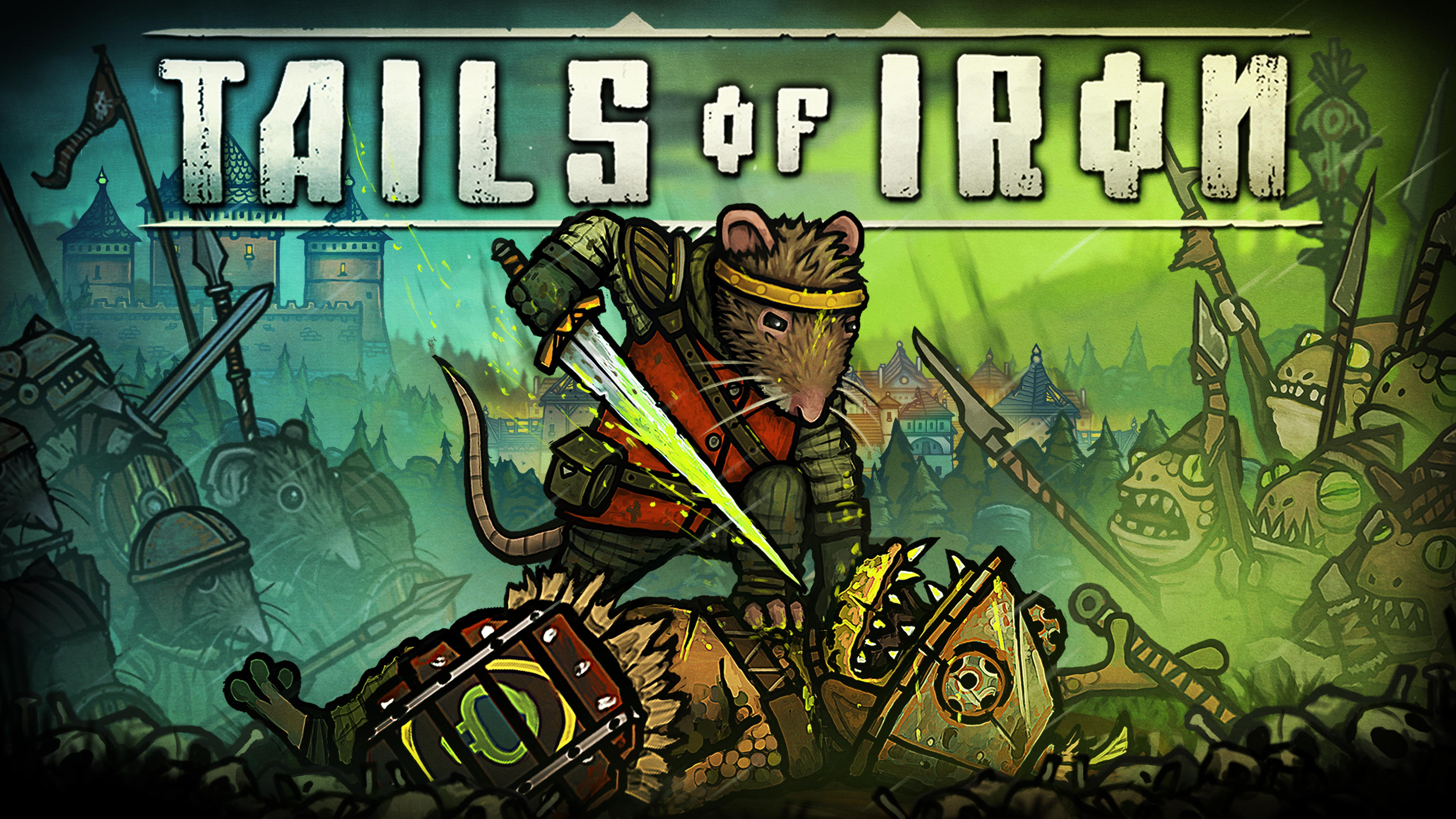Tails of Iron showcases the ability of a small studio to put the bigger companies to shame
- Developer:Odd Bug Studio
- Publisher: United Label
- Release date: 17th September 2021
- Genre: 2D side scrolling adventure
- Platforms: PS4/5, Xbox One/Series X|S, Switch, Windows PC
- Reviewed on: PS5
- Game Supplied by: Publisher
Tails of Iron Review
Inspired by the developer’s own pet rats, Tails of Iron is a feature-length Indie developed RPG adventure game, showcasing what a small but inspired team of developers can achieve. Tails of Iron, despite the gloomy premise, positively sparkles with quality, verve, and confidence. However, a few divisive stumbles along the way may hold back some from diving into the medieval story of Redgi, the lead Rat and heir to the throne, in this classic tale of revenge.
The Rat kingdom has been demolished. Redgi’s brothers were captured, and his father the King, slain. All appears lost to the King’s son and next in line to the throne, Redgi, as he begins his quest to rebuild his kingdom then hunt down those that destroyed it. The story of the game is most certainly a simple one and curiously is presented to the player via awkward-sounding noises and pictures, then explained in narration afterwards.
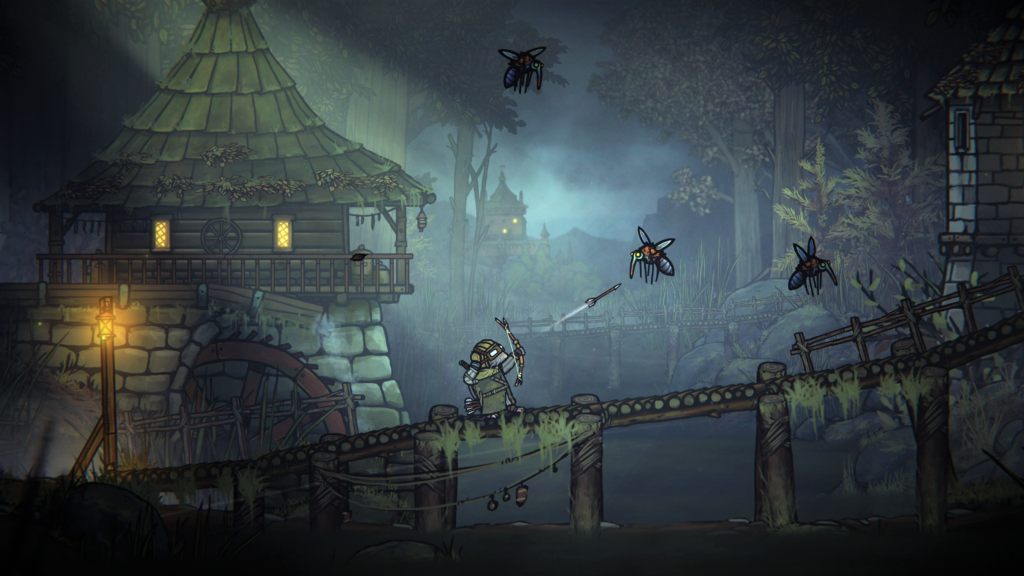
These noises, which begin in the opening moments of the game, can grate the ear somewhat, however, the narrator, Doug Cockle, will likely be familiar to many gamers. For those wondering who Doug is, he voiced Geralt of Rivia in The Witcher games (and more). Having Doug’s gruff, rasping voice as the narrator is an inspired choice, as it lends an air of authenticity to the proceedings that no other actor could provide. Even if Troy Baker (Rick and Morty, The Last of Us, Far Cry 4) did the narration, it wouldn’t have been the same. Doug is, of course, superb, and it’s a joy just to hear his narration bringing life to the proceedings in such style and occasional humour.
The main story of the game will take around 10 to 12 hours to complete, but with a wealth of side quests, and places to explore, many more will be added on top. However, the game is split into two distinct halves. The first half of the game, taking around 5 to 6 hours, will be spent rebuilding your kingdom, with the rest spent hunting down your foes.
The story is straight-laced but also lacks character building, which is a crucial element. As the presentation of the game is depicted by a series of cartoon-style drawings I never really got to engage with each character, so felt no empathy towards them. Additionally, there aren’t any unexpected twists in how the story unfolds, but it is satisfying to complete nonetheless.
The mechanics of the game are varied and simple: To explore the world you simply traverse either left or right, climb ladders, and with a simple button press you can go upstairs or through doorways. The platforming of the game is, to be honest, overly simple and not very exciting.
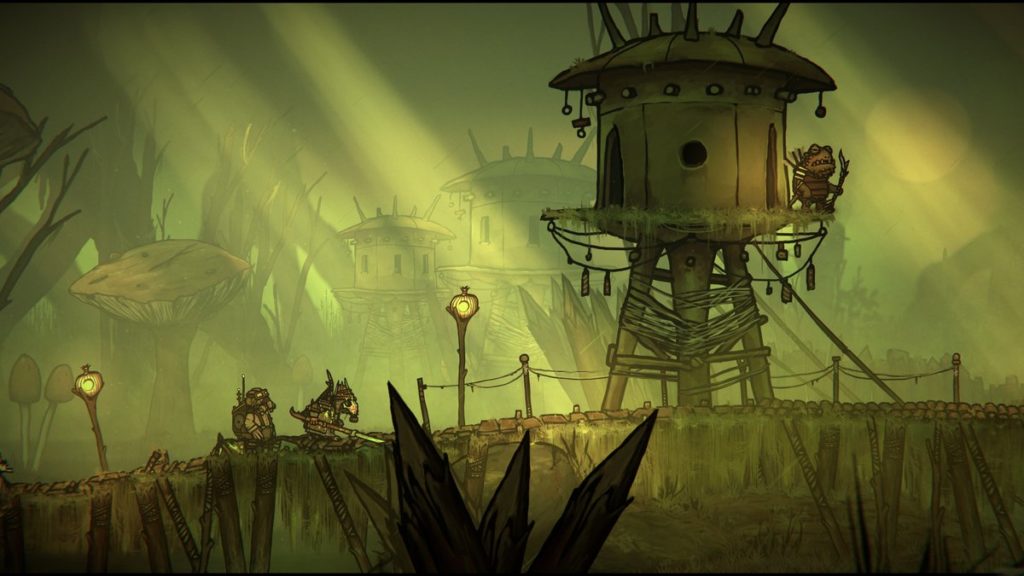
The main aspects of the game to get you through are the RPG elements and combat. Both err on the side of simplicity and the game, it could be argued, is much the better for it. Combat is the most divisive aspect. The developers themselves advertise the game as having “Souls Like” combat, which is interpreted as rock-solid hard for which it most certainly is.
The move set for Tails of Iron is simple, but tricky to master. Redgi can equip, over time, a single-handed weapon with a shield or a more powerful two-handed weapon, and a ranged weapon like a bow, crossbow or much later a gun.
None of the enemies are particularly easy to dispatch, and you need to approach each combat event with respect. With resources at times scarce, getting through each battle using as few of your resources as possible is key.
The enemies themselves give a visual indication (most of the time) of which attack is coming and therefore what you need to do to respond. If the enemy highlights white jagged lines then you will need to block, yellow constitutes parry, red jagged means dodge once, whereas a red circle means you’ll need to dodge twice (if you have the room).
Combat has an unusual quirk in that when you use a two-handed weapon, you then can’t guard until you have equipped and used the single-handed weapon. With such brutal combat, one mistake can lead to a lot of work being undone in an instant; I lost count of the number of times I’d just hacked at an enemy with my two-handed weapon, only to realize I needed to block their next attack. However, as the last item I used was two-handed, my shield wasn’t forthcoming so I got hammered. It became such a regular annoyance that, for the most part, I gave up on using the two-handed weapon so I could rely on the instantaneous block when I needed it, and you will need it often!
For the harder fights, the way the game plays doesn’t really give you time to breathe. Finding the rhythm of the boss fights revolves around you initially getting hammered. In the next couple of attempts, you’ll learn to read their attacks and work them out, until finally, you can almost get through the entire fight without receiving damage. From feeling out of your depth to becoming a no-hit legend is quite something. But, as the bosses get harder, the margin for error becomes smaller.
Mastering Boss fights is akin to playing a rhythm game, where you must learn how to react to the enemy before attacking:
Dodge, Dodge, Block, Parry, Dodge, Dodge, HIT…
Dodge, Dodge, Block, Parry, Dodge, Dodge, HIT… and so on.
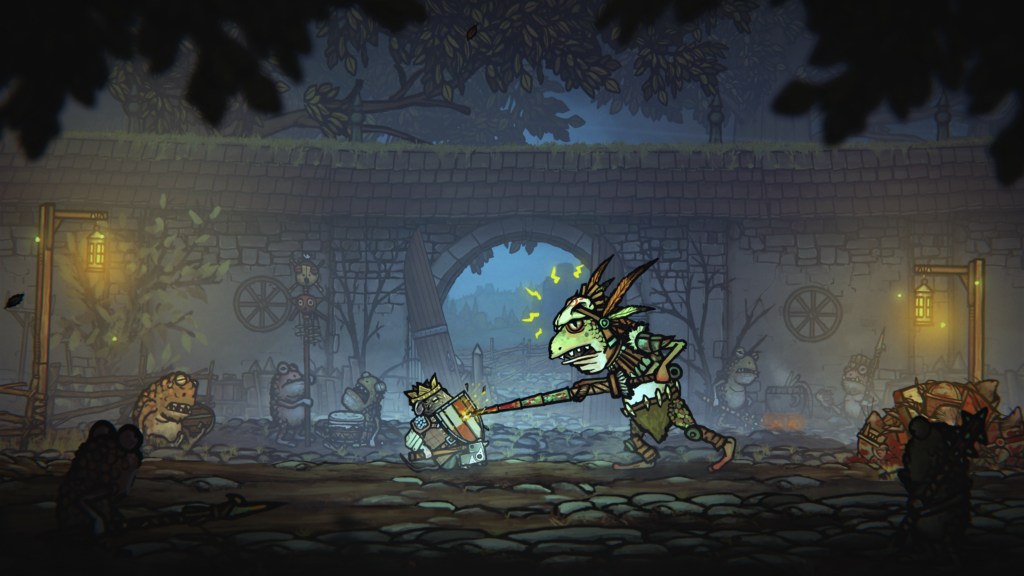
The problem is, if you get the rhythm slightly wrong in this battlefield dance, defeat can be snatched from the jaws of victory in an instant. Getting 47 of 50 attack sequences correct only to lose because you got three moments wrong seems and feels quite harsh, but that is occasionally what happens.
Preceding most of these end of mission fights is a melee encounter that involves up to four mid-level enemies at once. These still hit really hard, but the problem when facing multiple enemies is that while one may be highlighting an attack you need to block, another will be sizing up for an attack you need to dodge, while another is just hammering you. Being able to avoid these simultaneous attacks on such a small battle arena is practically impossible. I found I could die much quicker in these multiple enemy fights than even the late game one on one boss fights. To add to these woes, there was the occasional “cheap” death caused by the enemies literally blocking you to one side of the screen with no means to escape, and the even more unglorified death when they launch objects at you from off-screen. With such fine margins for error, these small details matter.
Each fight makes you feel like David taking down Goliath
Despite all that, the sensation of euphoria after successfully negotiating through the particularly hard fights is palpable and pushes you further into the game. Each fight makes you feel like David taking down Goliath and it’s intoxicating! I’m not ashamed to say encounters had me shouting expletives at the TV, only to then have me crying out, “Ha! Got you now sucker”, shortly afterwards. There were multiple times I defeated a particularly hard encounter, only to then notice I survived with just a slither of health at the very end. This just goes to show how perfectly balanced the game’s combat system actually is. Mercifully, the game has a very generous amount of save points, so you are never too far away from the last place you died, and neither is there a staggering amount of battles to wade through.
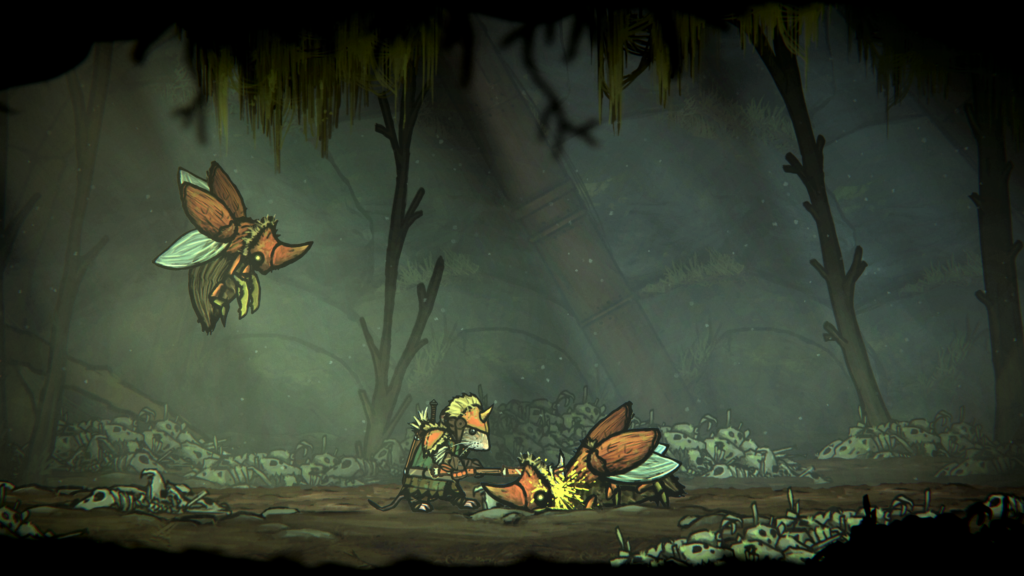
The RPG elements of the game were interesting but not fascinating or very deep. Each piece of equipment Redgi acquires, be it through discovery, rewards, or being made via blueprints in your forge, has a stat value. Some items are light and fast but don’t pack a punch. Others are heavy and slow, but deal a lot of damage. With three types of single-handed melee weapons and three types of double-handed weapons, there is scope to mix and match to the playstyle you prefer. I opted for a quick single-handed weapon, as with such a small margin for error in the combat, I felt the slower, more cumbersome, heavy-hitting weapons weren’t worth the risk of missing a block or being unable to dodge the enemy.
Redgi himself can be outfitted in light, medium, or heavy gear, which includes headwear, armour and a shield. Some items to be worn were more proficient at negating damage from certain enemy types, although the effectiveness of them didn’t seem large compared to just having armour with decent overall protection.
There is a rudimentary crafting system, and finding certain edible items allows the chef to cook up a recipe that permanently upgrades your health. There were also two other potions to use in battle, and a bottle of liquid to drink to replenish your health. Finding blueprints enabled the blacksmith to craft new weapons, but these weren’t blueprints of a specific weapon, you just have to find a certain number of pieces of generic blue paper called blueprints.
Overall the RPG element of the game was serviceable but interesting in that with some armour being better suited to some enemies, and with some enemies being slower than others, I found I was constantly mixing and matching what there was to see what worked best. If the system had more depth than it does, it would have been too exhausting to continually search through my inventory to find the right setup. Therefore, as it is, it is perfectly acceptable.
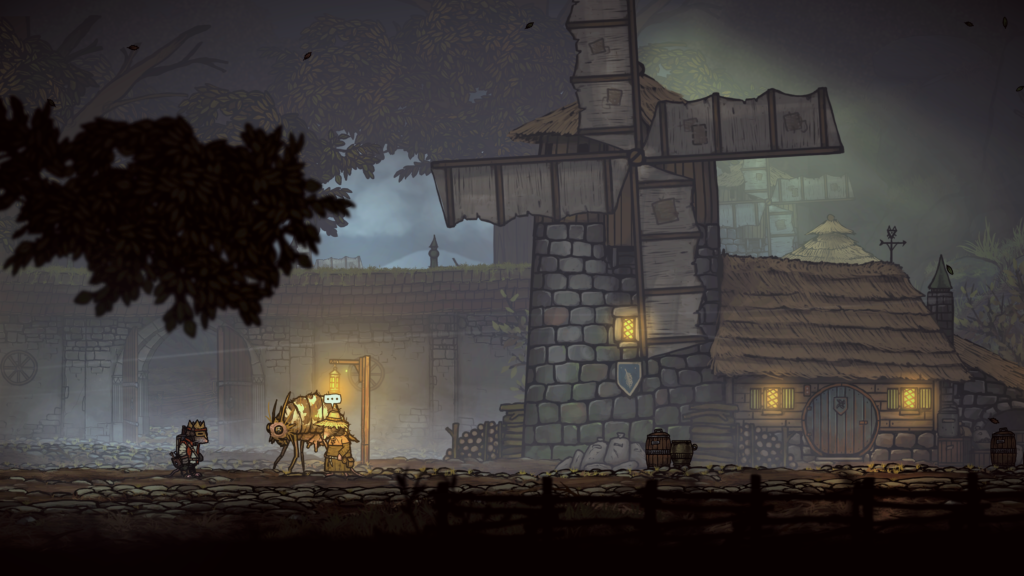
The game’s presentation, graphics and audio are where Tails of Iron truly excels. Even for the medium of a 2D field, the amount of craft, care, and interesting elements added to each setting is jaw-dropping. Fine detail can be found wherever your eye wanders, and it most certainly will. The colour palette is expansive, and the lighting is superb. Backgrounds have layers of depth, all with such detail and fleeting glimpses of the creatures you will be fighting next, and there is always something to drink in. Throw in the excellent particle effects and consistent 60 fps, and you have a stunning looking game. The only negative with the graphics was the movement of Redgi himself, and the movement of enemies. They were all a little clunky, which often made it hard to be precise.
The audio was outstanding, with excellent environmental effects. Howling wind, driving rain or the dark dank drip of water in a tunnel, alongside the hubbub of life going on as you pass by brings the world to life. I loved how sounds reverberated authentically around the walls of a brick tunnel, too. From the creaking of a wooden ladder when a strain was put on it to my personal favourite, the wet crunch of a knife defiling a dead body as Redgi searches for its resources. The attention to detail in the audio was excellent.
The presentation of the game was clear and easy to navigate. Waymarkers are easily found, as are items in the inventory. My only gripe, and it was a hindrance for a while until I figured them out, is that there is no legend for the icons on the map. Once you know which icon to look for it is clear but, for a while at least, you may wonder what each icon represents.
Lastly, there needs to be a tip of the hat in respect to the developer and publisher for being the first companies I can recall that have sensible and varied price points. The game, if bought digitally, is markedly cheaper than its physical counterpart; £19.99 RRP to download or £34.99 for the physical disc version. If only other companies would follow this precedent!
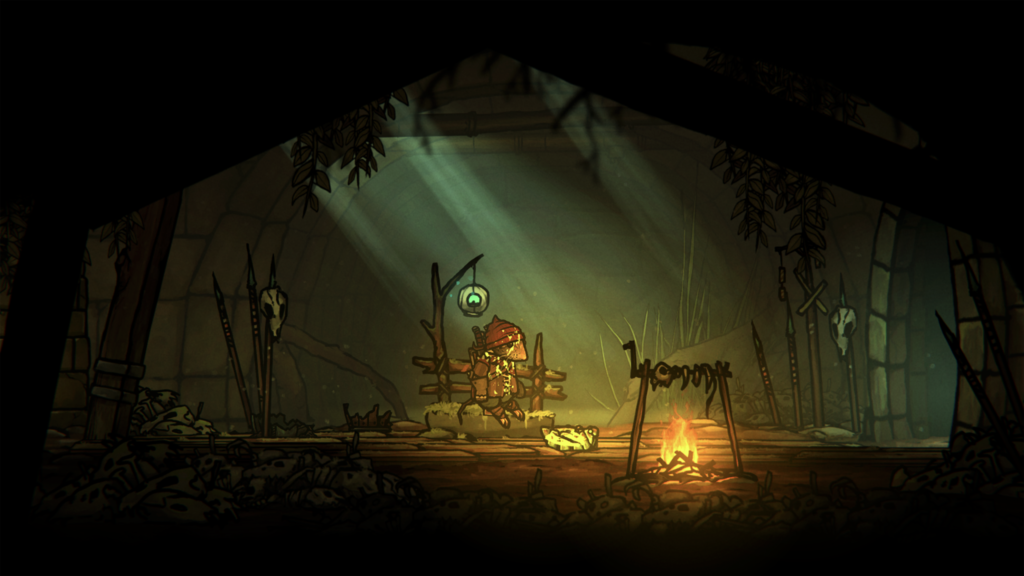
Summary
The combat is very hard, but only because the game wants you to dance to its rhythm, not yours, and the odd way in which there are no words, just noises and pictures to depict interactions between characters doesn’t allow the player to become invested in each character’s cause. However, with stunning graphics, fantastic audio, and a mostly fair combat system that rewards you for playing to its tune with a huge dose of satisfaction, it really does draw the player back time and time again to keep playing.
The quality of this game from such a brilliant and talented bunch of developers shines through. Tails of Iron is a wonderful example of why you should always consider purchasing Indie developed games before looking at the bigger AAA blockbusters.
